Atomic Battery for Data Center
Our gadgets are becoming smaller, lighter, more economical every year. This is an obvious, irreversible trend. Buying your ultra-thin iBook from Applestore, few of us think that mega-data centers are behind this and similar pretty creatures. Often these are infrastructure nodes that are ugly in design, devouring an myriad of energy, such monsters that provide our everyday comfort. Direct or indirect reduction of our gadgets causes an increase in data centers. Thanks to the ubiquitous appearance of high-speed Internet, developers of tablets and smartphones manage to move an increasing part of physical resources from portable devices to remote data centers. Modern data centers, unlike their earlier versions, located in small utility rooms at scientific and business institutions, rather, they resemble steel mills, both in area and in consumed resources, and in terms of the level of protection regime they are sometimes not inferior to military bases. All of the above factors and advanced developments of scientists in the field of creating portable nuclear reactors suggest what if ...

As the saying goes: "Little children are small problems, big children are big problems." This applies to electricity consumption by data centers. According to statistics, the larger the data center, the closer its PUE is to unity, because the larger the data center's scale, the more expedient there are investments to increase its energy efficiency. While the PUE coefficient for small data centers can exceed 4.0, for large data centers it often does not exceed 2.0. But, even having such statistics on hand, the scale of data centers, say, from Google or Facebook, does not leave a chance for the energy networks of the regions where they are being built.
While most telecommunications giants carefully hide their internal information, the brainchild of Zuckerberg shares it with everyone who wants it, and here are extracts from it.

According to data from 2013, 787,000 megawatts of electricity were spent on the operation of all data centers from Facebook. Given the total number of servers of the corporation, experts generally agree on a figure of 200,000, the instantaneous energy consumption of one server is on average about 0.45 kilowatts. And do not forget that this data is relevant for data centers with an average phenomenal PUE coefficient of 1.09!
The numbers are truly impressive. For example, data centers located in Prieville and Forest City consume more energy than their satellite cities with a population of about 10 thousand people. This state of affairs is a challenge for the entire existing infrastructure, the electricity network, of course, is no exception. What to do? One answer to this question may be the portable nuclear reactor developed by Dr. Ottis Pete Peterson, who works at the Los Alamos National Laboratory (USA).
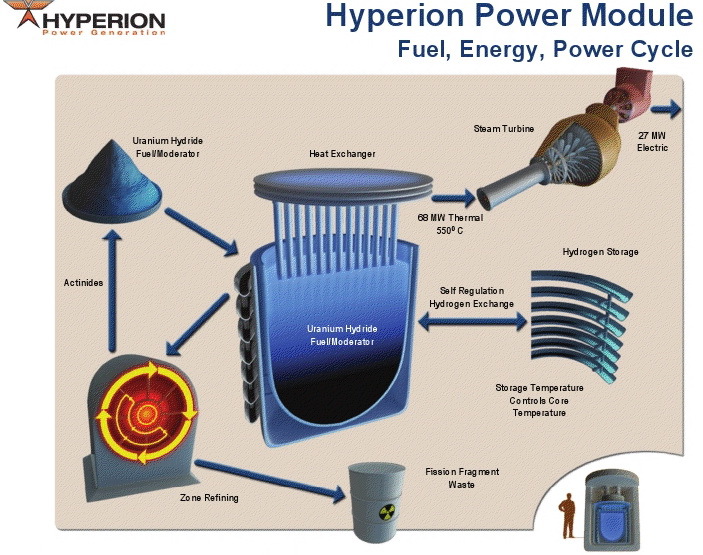
Developed back in 2008, the mini-nuclear power plant impresses with its characteristics. According to the stated data, Hyperion is an underground reactor with a capacity of about 25 MW, capable of providing electricity to 20 thousand private houses. This is a modular reactor, and with the growth of needs it is quite possible to connect additional modules at a selected site. The reactor is fully automated and does not require personnel maintenance. The only thing that is assigned to a person is monitoring. According to the project, the unit is configured to be immediately jammed when significant deviations from normal operation occur.
The life of the reactor is from 5 to 10 years without overload, after which it will be sent to the plant for refueling with a new portion of nuclear fuel. The reactor uses uranium hydride fuel, with uranium enrichment of less than 20% selected. The price of such a product varies from 25 to 30 million dollars.
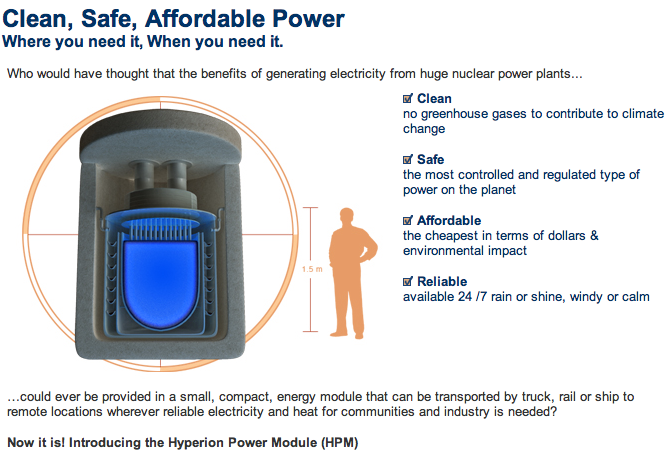
According to the calculations of the designers, the price of one kilowatt of the produced mini-nuclear power plant will not exceed 10 US cents, which in turn is even cheaper than the average cost in the USA. Also, the asset of such a solution can be written the absence of additional costs for the modernization of the entire electric grid of the territory, the need for which naturally arises when such an active energy consumer as a data center is built on it.
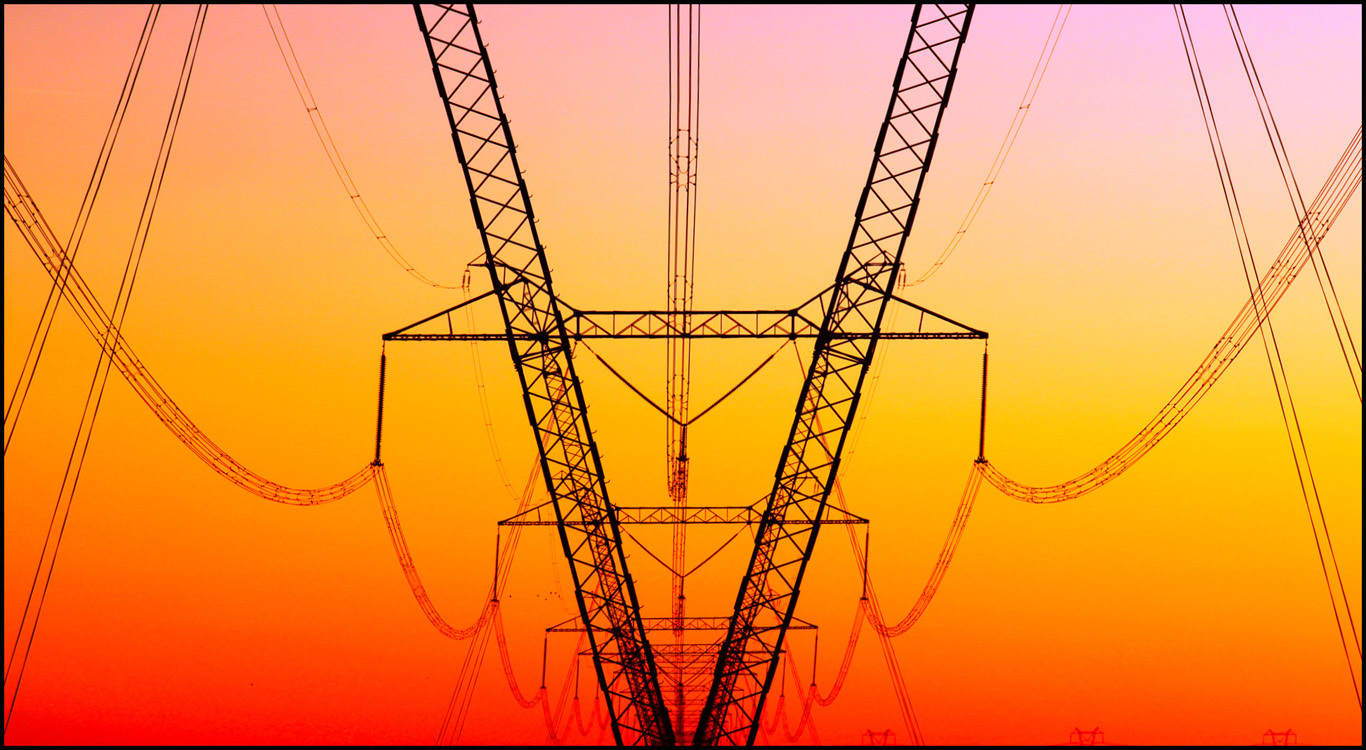
When analyzing the possibility of using portable nuclear power plants in the conditions of data centers, one should not forget about the technical conditions faced by data centers.
The obvious advantages of this solution are 100% accountability of the energy source. Risks of high-voltage line breakage somewhere over hundreds of kilometers, of course, are eliminated, since the entire infrastructure is located within the same site. Security from congestion by joint users of the trunk line is also an obvious plus. There is also the possibility of placing huge data centers in remote areas of the extreme server with the best climatic conditions for its more efficient functioning (provided that the problem with communication channels is resolved).
Problems may arise with the specifics of the functioning of a nuclear reactor, the range of changes in the loads on it can be very limited and rather inert, which in the conditions of everyday bursts of activity in the operation of the data center can be a problem. Also, do not forget about the duplication of the energy source, in which quality one more reactor is a rather dubious thing due to the same lack of flexibility of the source. Security concerns are becoming even more acute. Any nuclear reactor can become the target of terrorists, which simply obliges the company operating it to take special responsibility for the safety of the facility, and this, of course, is an additional cost. Also, the national legislation of a number of countries,
The economics of deciding to use a portable nuclear power plant are quite logical, but how much will it be environmentally friendly? Will a social protest “buried behind the neighboring sports ground of the NPP” cause a social protest?

As you can see from the above materials, kindly provided by Facebook employees, you can analyze the structure of electricity consumed by their data centers. Although it is very arbitrary, it gives an overall picture.
As you can see, only in the last two years, part of the server infrastructure’s consumption of atomic energy has almost doubled, while part of the renewable energy has almost halved. There is nothing surprising here, because only an atom can guaranteed feed such a giant. What can I say, and after all, the data centers from Facebook are far from the largest representatives of their kind (not a single data center among the Top 10 largest).
At a time when green energy is simply not able to satisfy the growing needs of consumers, nuclear energy comes to the rescue, and you can’t do it with windmills. If we compare traditional hydrocarbon power plants, then environmental issues arise for them more than for a peaceful atom. They all wonderfully understand this and are ready to put up with it, but, as is often the case, if this reactor is "not on the next street."
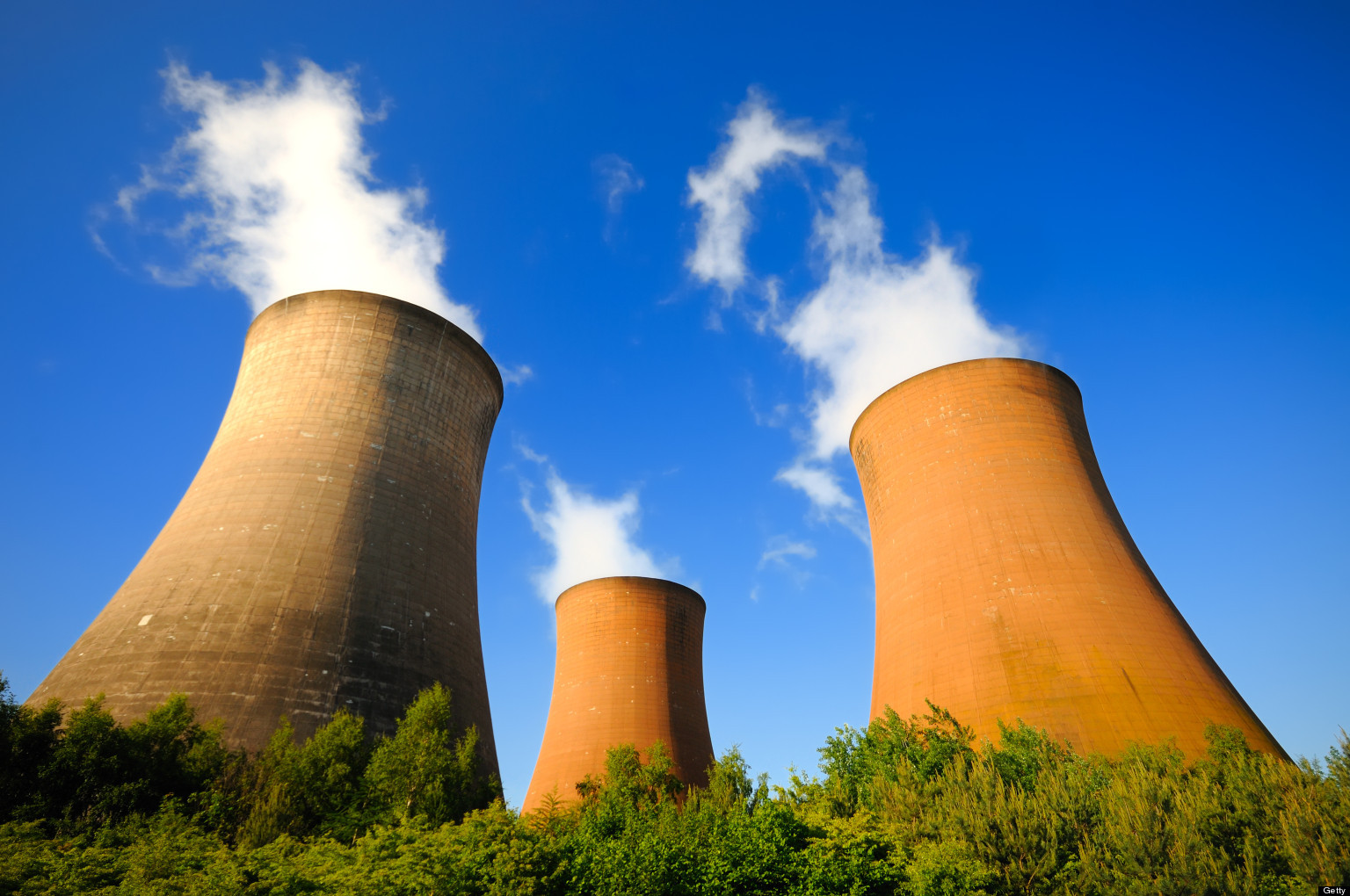
No matter how much all the above sounds defiant, and for some, maybe even wildly, progress cannot be stopped. Every year the IT business is gaining weight. The ease and low cost of the solutions that are offered to us at every step by the company carries an invisible burden of complex issues and choices. Where the progress will lead us in the pursuit of the functionality and cheapness of our devices - only the future will show.
TES-3 is a transportable nuclear power plant transported on four self-propelled tracked chassis based on the T-10 heavy tank
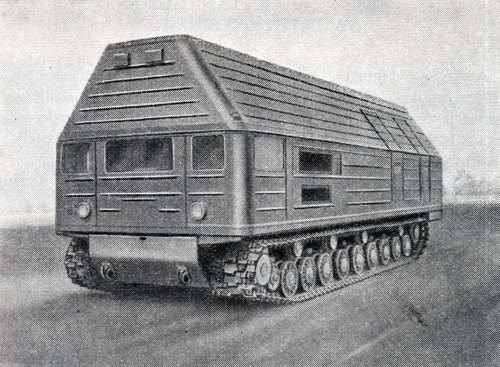

Energy Eaters
As the saying goes: "Little children are small problems, big children are big problems." This applies to electricity consumption by data centers. According to statistics, the larger the data center, the closer its PUE is to unity, because the larger the data center's scale, the more expedient there are investments to increase its energy efficiency. While the PUE coefficient for small data centers can exceed 4.0, for large data centers it often does not exceed 2.0. But, even having such statistics on hand, the scale of data centers, say, from Google or Facebook, does not leave a chance for the energy networks of the regions where they are being built.
While most telecommunications giants carefully hide their internal information, the brainchild of Zuckerberg shares it with everyone who wants it, and here are extracts from it.

According to data from 2013, 787,000 megawatts of electricity were spent on the operation of all data centers from Facebook. Given the total number of servers of the corporation, experts generally agree on a figure of 200,000, the instantaneous energy consumption of one server is on average about 0.45 kilowatts. And do not forget that this data is relevant for data centers with an average phenomenal PUE coefficient of 1.09!
The numbers are truly impressive. For example, data centers located in Prieville and Forest City consume more energy than their satellite cities with a population of about 10 thousand people. This state of affairs is a challenge for the entire existing infrastructure, the electricity network, of course, is no exception. What to do? One answer to this question may be the portable nuclear reactor developed by Dr. Ottis Pete Peterson, who works at the Los Alamos National Laboratory (USA).
Hyperion NPP - portable nuclear power plant

Developed back in 2008, the mini-nuclear power plant impresses with its characteristics. According to the stated data, Hyperion is an underground reactor with a capacity of about 25 MW, capable of providing electricity to 20 thousand private houses. This is a modular reactor, and with the growth of needs it is quite possible to connect additional modules at a selected site. The reactor is fully automated and does not require personnel maintenance. The only thing that is assigned to a person is monitoring. According to the project, the unit is configured to be immediately jammed when significant deviations from normal operation occur.
The life of the reactor is from 5 to 10 years without overload, after which it will be sent to the plant for refueling with a new portion of nuclear fuel. The reactor uses uranium hydride fuel, with uranium enrichment of less than 20% selected. The price of such a product varies from 25 to 30 million dollars.

According to the calculations of the designers, the price of one kilowatt of the produced mini-nuclear power plant will not exceed 10 US cents, which in turn is even cheaper than the average cost in the USA. Also, the asset of such a solution can be written the absence of additional costs for the modernization of the entire electric grid of the territory, the need for which naturally arises when such an active energy consumer as a data center is built on it.

The specifics of the functioning of data centers
When analyzing the possibility of using portable nuclear power plants in the conditions of data centers, one should not forget about the technical conditions faced by data centers.
The obvious advantages of this solution are 100% accountability of the energy source. Risks of high-voltage line breakage somewhere over hundreds of kilometers, of course, are eliminated, since the entire infrastructure is located within the same site. Security from congestion by joint users of the trunk line is also an obvious plus. There is also the possibility of placing huge data centers in remote areas of the extreme server with the best climatic conditions for its more efficient functioning (provided that the problem with communication channels is resolved).
Problems may arise with the specifics of the functioning of a nuclear reactor, the range of changes in the loads on it can be very limited and rather inert, which in the conditions of everyday bursts of activity in the operation of the data center can be a problem. Also, do not forget about the duplication of the energy source, in which quality one more reactor is a rather dubious thing due to the same lack of flexibility of the source. Security concerns are becoming even more acute. Any nuclear reactor can become the target of terrorists, which simply obliges the company operating it to take special responsibility for the safety of the facility, and this, of course, is an additional cost. Also, the national legislation of a number of countries,
Environmental friendliness
The economics of deciding to use a portable nuclear power plant are quite logical, but how much will it be environmentally friendly? Will a social protest “buried behind the neighboring sports ground of the NPP” cause a social protest?

As you can see from the above materials, kindly provided by Facebook employees, you can analyze the structure of electricity consumed by their data centers. Although it is very arbitrary, it gives an overall picture.
As you can see, only in the last two years, part of the server infrastructure’s consumption of atomic energy has almost doubled, while part of the renewable energy has almost halved. There is nothing surprising here, because only an atom can guaranteed feed such a giant. What can I say, and after all, the data centers from Facebook are far from the largest representatives of their kind (not a single data center among the Top 10 largest).
At a time when green energy is simply not able to satisfy the growing needs of consumers, nuclear energy comes to the rescue, and you can’t do it with windmills. If we compare traditional hydrocarbon power plants, then environmental issues arise for them more than for a peaceful atom. They all wonderfully understand this and are ready to put up with it, but, as is often the case, if this reactor is "not on the next street."

Total
No matter how much all the above sounds defiant, and for some, maybe even wildly, progress cannot be stopped. Every year the IT business is gaining weight. The ease and low cost of the solutions that are offered to us at every step by the company carries an invisible burden of complex issues and choices. Where the progress will lead us in the pursuit of the functionality and cheapness of our devices - only the future will show.
PS Soviet scientists, as always, are ahead of the rest
TES-3 is a transportable nuclear power plant transported on four self-propelled tracked chassis based on the T-10 heavy tank

